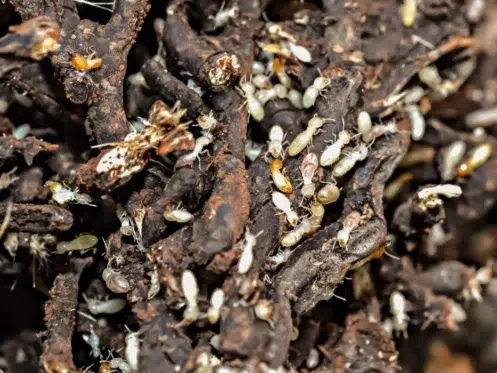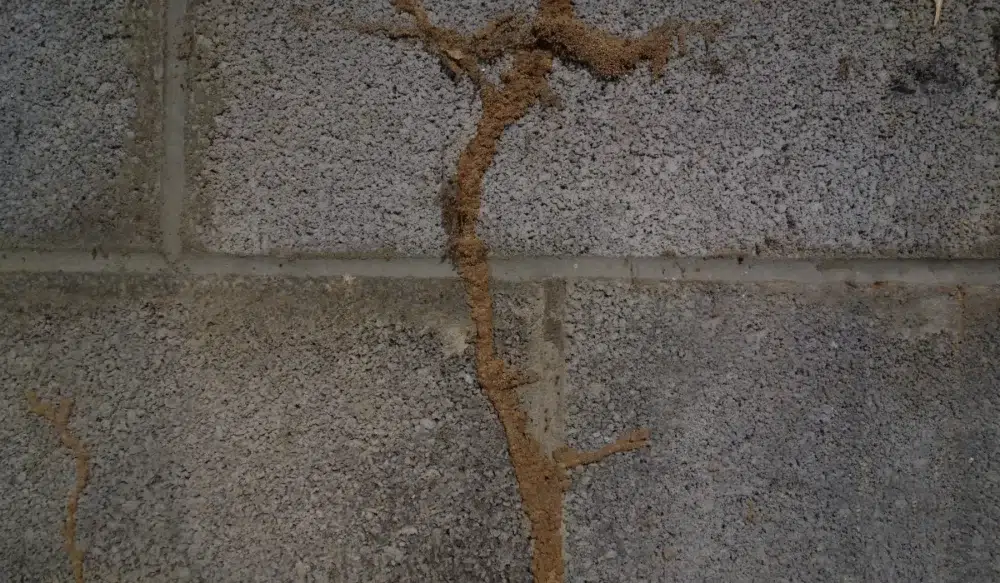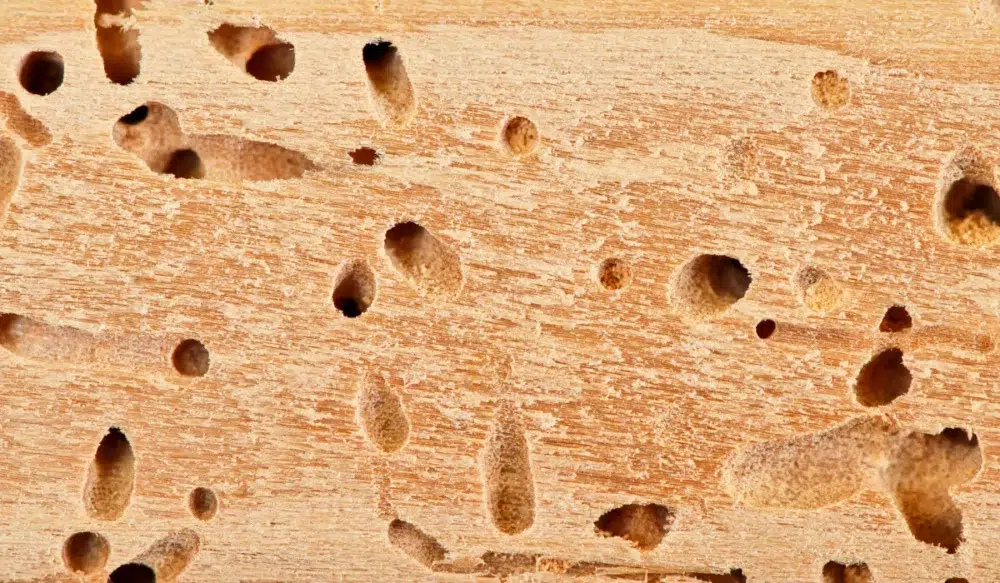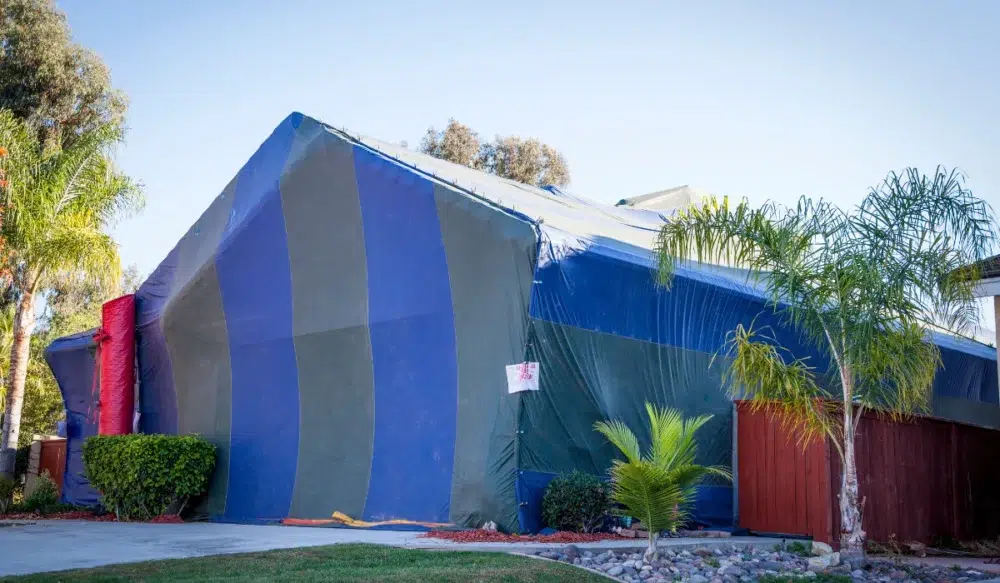If you’ve ever looked out at your porch lights and noticed a cloud of flying insects that look suspiciously like ants with wings, there’s a good chance you’ve seen termite swarmers. They are the reproductive caste of a colony, and their appearance is one of the earliest signs of activity around your home.
In Arizona, the termite swarming season can sneak up on you, especially if you’re not sure what to look for. Swarms are the most visible stage in the life cycle of this species.
Let’s walk through the timing of these subterranean termite swarms, why they happen, and what you, as a homeowner, can do to protect your property.
Key Takeaways
- Subterranean termites usually swarm in Arizona from late winter to late spring, with peak activity in March and April.
- Swarming happens when the weather warms, humidity rises, daylight increases, and the termite colony is fully grown.
- Flying termites near lights, windows, or crawl spaces may mean a mature colony is already active near your home.
- Pest control companies can offer fast inspections and treatments to protect your home from termites all year long.
Swarming Season for Subterranean Termites in Arizona
In Arizona, subterranean termites typically swarm between late winter and late spring, with peak activity in March and April. This is when alates, the winged reproductive termites, leave their established colonies to find new mates and start new colonies.
You might notice swarming termites near windowsills, doors, or crawl spaces, especially after rainfall. Seeing them indoors or around your home is a red flag that there’s a mature termite colony close by, and possibly a growing termite infestation.
Here’s what you need to know about the weather conditions that trigger these swarms.
Rising Temperatures in Late Winter and Early Spring
Once the desert chill fades, termite species like eastern subterranean termites and Formosan subterranean termites become more active. These pests are extremely sensitive to heat changes, and warmer days signal that it’s time to start expanding their population.
Even though some types of termites, like drywood termites and dampwood termites, follow slightly different swarming patterns, they are especially tuned into temperature shifts.
Increased Humidity After Rainfall
Moisture is a key factor in termite activity. Even brief spring showers can soften dry soil, allowing swarmers to break free and take flight.
The combination of warm temperatures and humidity creates perfect swarming conditions. These flying termites may show up in large numbers, especially around lights at night.
Termites rely on moisture because their bodies dry out easily.
That’s why you’ll often find mud tubes running up the foundation of infested homes. These tubes act like humid highways between their underground nests and your wooden structures—a favorite food source rich in cellulose.
Colony Maturity and Readiness
Do termites swarm just for fun? Not quite.
They only swarm when a termite colony is large enough to support reproduction. That means if you’re seeing swarmers, there’s a well-established colony nearby, potentially with worker termites feeding on your home’s foundation or walls.
The colony needs to be about three to five years old before it can support swarming behavior. If you haven’t had a termite inspection in a few years, this could be your wake-up call.
Photoperiod and Daylight Patterns
Just like some plants and animals, these pests respond to changes in daylight. Longer spring days help trigger termite swarms. Research on Formosan subterranean termites found that their swarming patterns follow a predictable rhythm based on light, not weather.
Swarming termites even pause partway through the season, likely due to changes inside the colony. They usually take flight in the daytime when there’s plenty of light to guide them.
In Arizona, early summer swarms can also occur if spring conditions persist, or if termites find new opportunities for food or shelter nearby, like excess mulch, rotting wood, or moist soil near your home.
Seeing Winged Termites? Here’s What to Do Next
At Green Home Pest Control, we know Arizona’s species of termites inside and out. Our team understands the entomology behind termite behavior, and we offer targeted termite control options that work with the local climate and pest pressures.
We offer:
- Thorough inspections for signs of termite damage, like droppings
- Advanced termite baiting systems to eliminate the entire colony
- Preventive termite treatment and solutions to stop infestations before they start
- Same-day or next-day appointments with experienced pest control professionals
A termite problem won’t go away on its own, and Arizona homes are at risk year-round. Get ahead of the termite swarms before they cause serious damage to your home.
Contact us today for a free termite inspection and expert protection for your home.
RELATED: What Time of Year Do Drywood Termites Swarm in Arizona?




